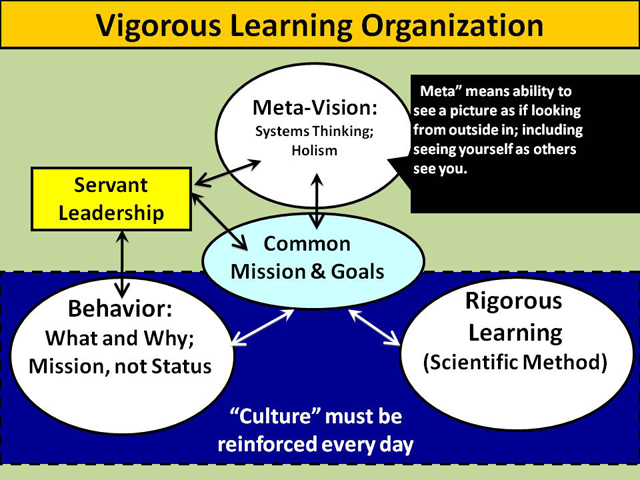
To deal with Compression, working organizations need to migrate toward becoming “vigorous learning enterprises.”
This kind of self-learning organization has a shallow hierarchy, and much work has to be done by people working together with minimal direction. They need systems of communication that are well-developed behaviorally as well as structurally. In effect, a vigorous learning organization is a densely networked work organization consisting of people that are professional both in expertise and in commitment to serve the mission of the organization.
No work organization beyond a primitive tribe is completely self sufficient. All must rely on the knowledge and expertise of others. A network of vigorous learning organizations is termed a vigorous learning enterprise. As can be seen in the diagram, this kind of organization is very different from most for-profit organizations today, although a few resemble it. The assumptions and the goals are very different.
Leadership cannot be highly autocratic. A structured learning system used by all has to be in place; this is based on adaptations of the scientific method, and trust is vital. Learning what did not “work” is as important as learning what did. But to use this system effectively, participants have to practice not only the methodology until it is habitual, they have to practice the behavior at work. A high level of trust must be developed to do this, and it is so different from normal commercial behavior that it has to be reinforced almost every day.
Exactly what any organization must do to deal with Compression cannot be prescribed in detail. All that can be done is illustrate “Compression Thinking” as a mind set from which people tackle the problems as they present themselves.
